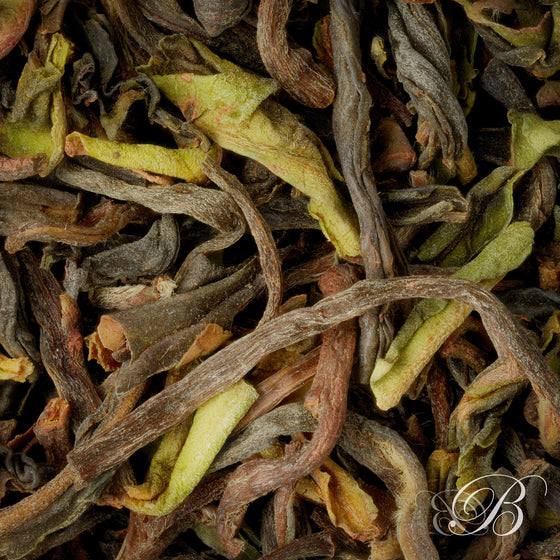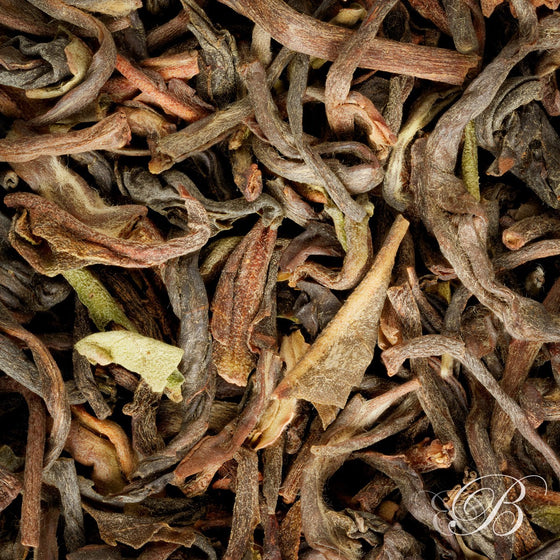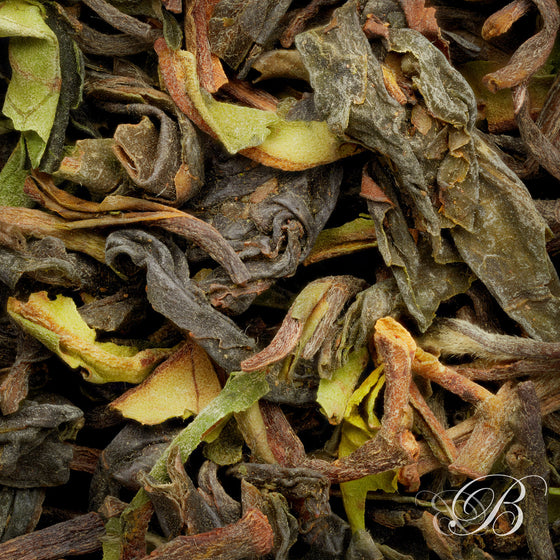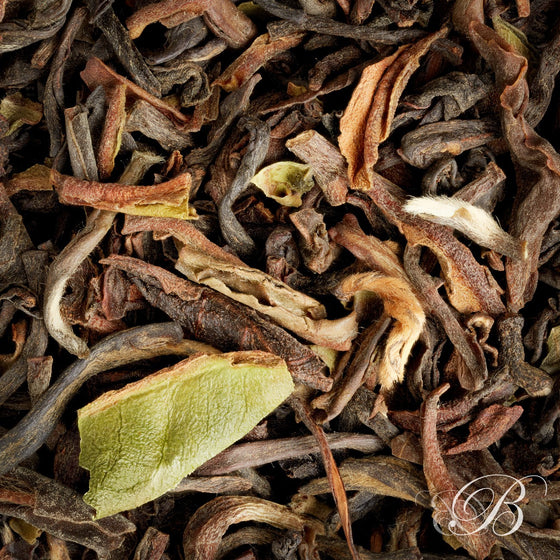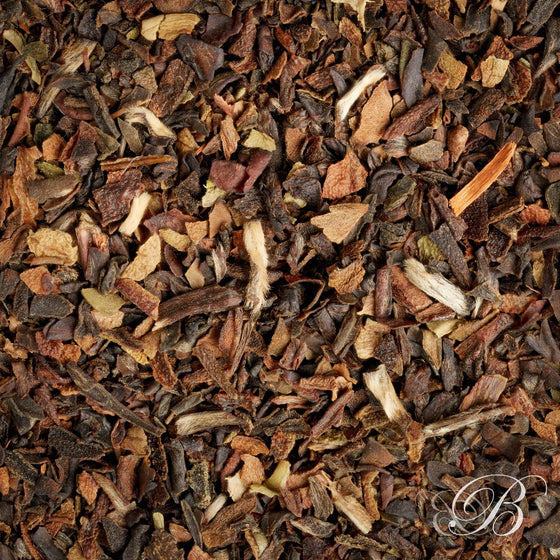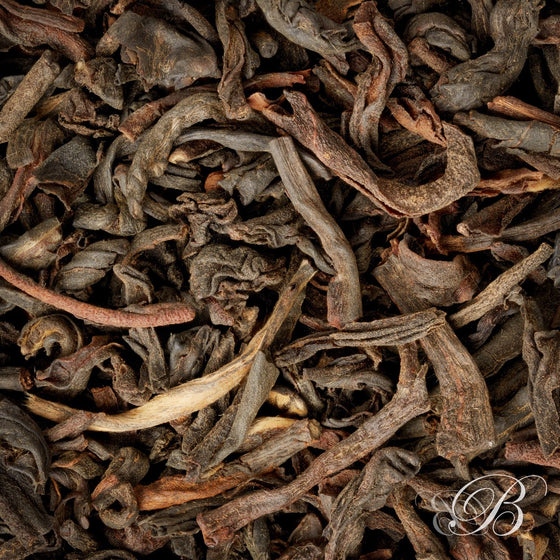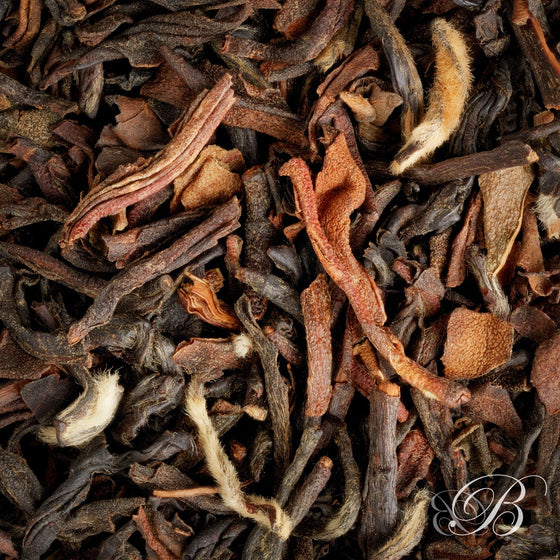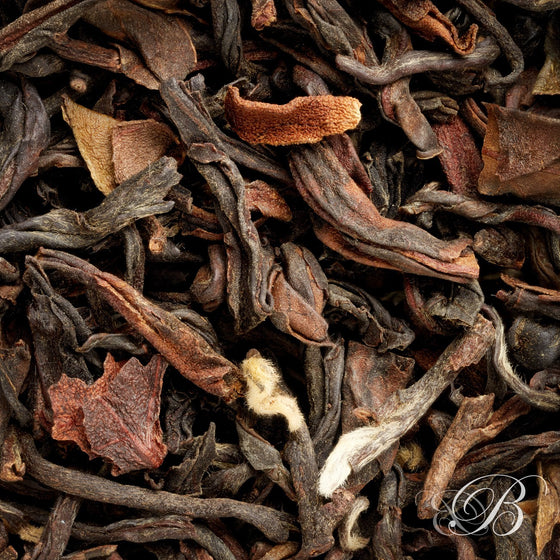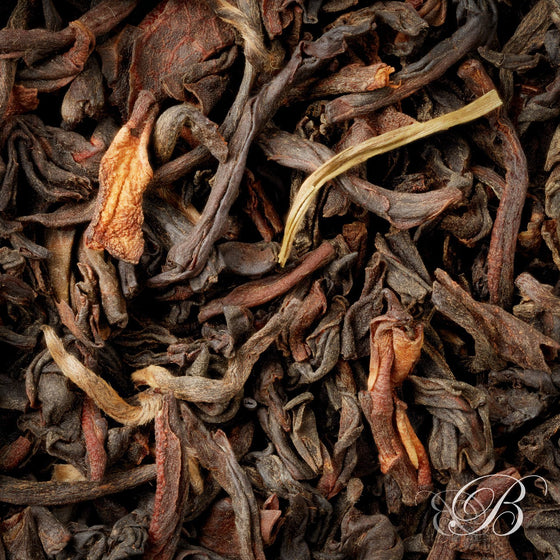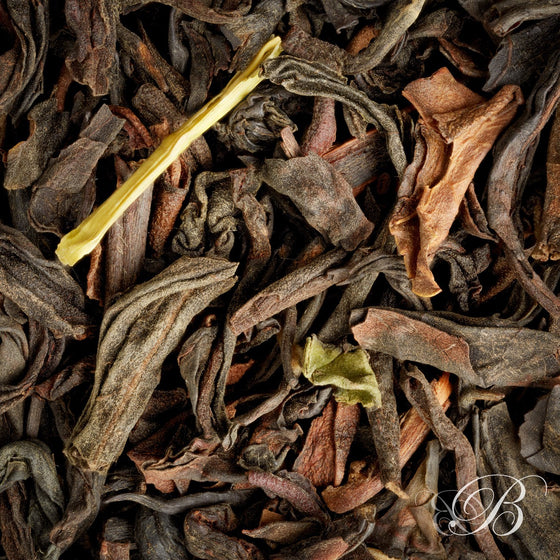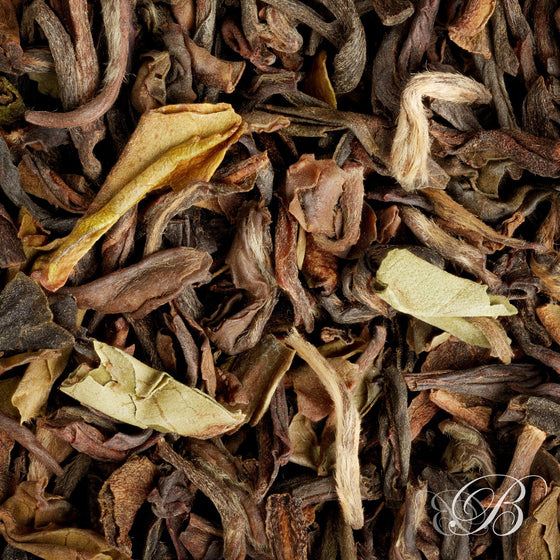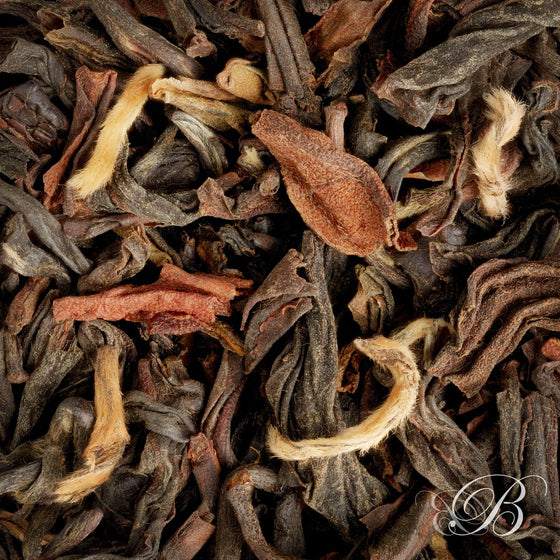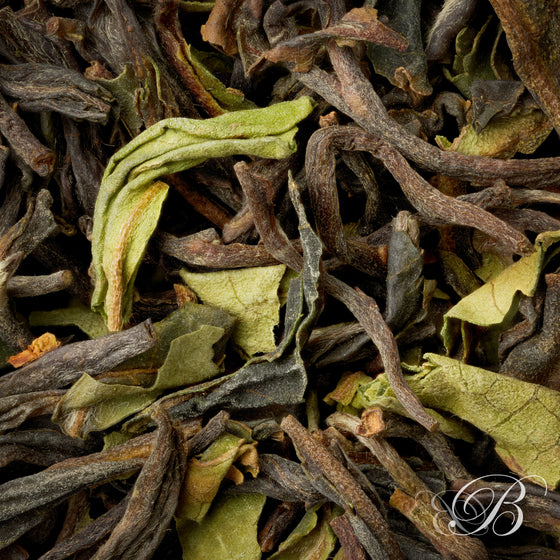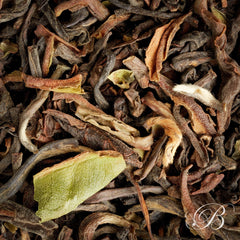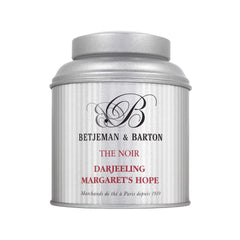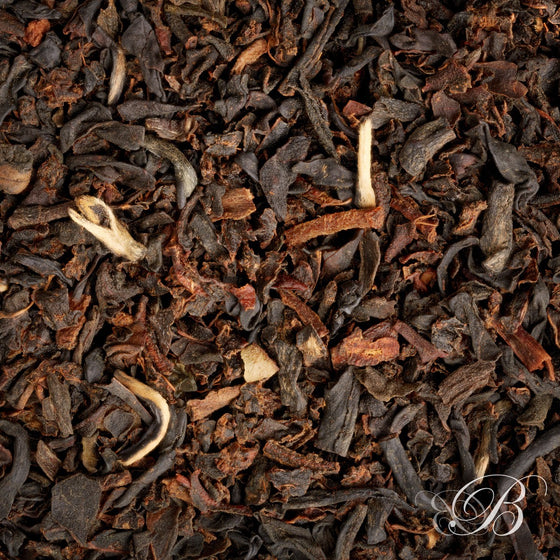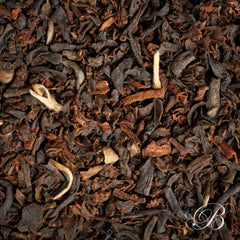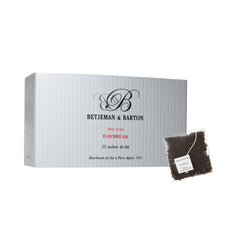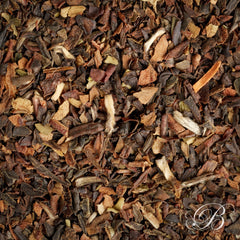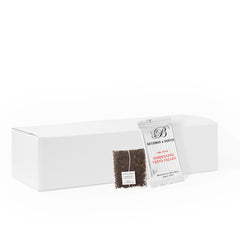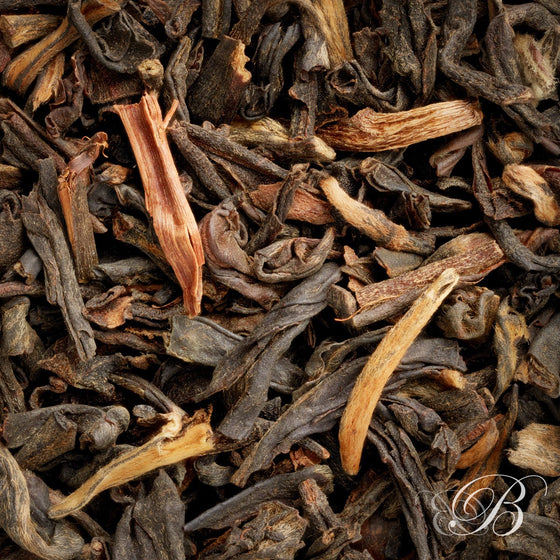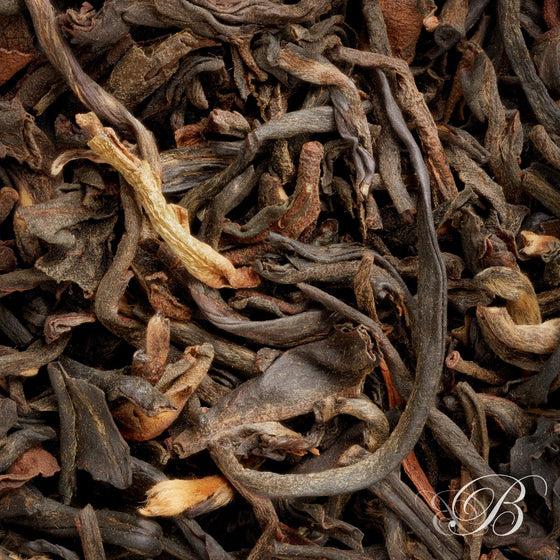Darjeeling tea, a black tea of timeless prestige
In order to understand theuniqueness of Darjeeling tea, it is essential to learn more about its origins. Darjeeling is a village in the Indian state of West Bengal. It is perched in the foothills of the Himalayas where, at an altitude of around 2,000 meters, the famous Camellia sinensis is grown. The leaves and buds of this shrub are used to make all the black teas, white teas, green teas, and oolong teas consumed throughout the world.
Because it's planted at high altitudes and thrives under frequent rain and warm sunshine, Darjeeling Camellia sinensis benefits from all the ideal conditions to produce a unique, balanced, and simply delicious tea. Furthermore, Darjeeling tea pickers are trained to harvest only the finest tea leaves, namely the last two shoots and the bud. This rigorous selection is one of the reasons for the premium quality of Darjeeling tea. Like champagne, authentic Darjeeling tea is grown within a well-defined, impassable perimeter.
Since the 19th century, theDarjeeling tea is one of the most popular teas worldwide.. In India, tea cultivation dates back precisely to this century and is attributed to Robert Fortune, a British botanist employed by the British East India Company. In 1848, Mr. Fortune smuggled 20,000 tea plants into India, a historical event known as “The Great Tea Robbery”. To this day, Darjeeling tea is the only tea recognized by a Protected Geographical Indication (PGI). At Betjeman & Barton, we select our Darjeeling teas from the best gardens – also known as “private plantations” – in Darjeeling to bring you drinks with a refined taste and guaranteed authenticity.
Thus, our Darjeeling teas come, for example, from the gardens of Castleton and Goomtee, to name but a few. Depending on the references, we detect light notes of peach, mango, citrus or even subtly delicious almond. Other vintages are rather full-bodied, which guarantees that every tea drinker will find a Darjeeling tea in perfect harmony with their preferences through our catalog. Some of our black teas also claim dual nationality, following the model of our English-inspired French House. This is the case of our“Winter Blend”, Asubtle blend of Darjeeling black teas, from Yunnan and Assam which brilliantly reflects the excellence of Chinese and Indian teas.
What are the stages of Darjeeling tea production?
In the vast, verdant gardens of Darjeeling, harvests follow the seasons. In spring, in mid-March to be precise, the "first flush" harvest produces teas with very vegetal aromas, to be brewed lightly. Then comes the "second flush" harvest between June and August, which promises more fruity and tannic aromas than the previous one.
Finally, the autumn harvest of the “third flush”, after the rainy season, gives birth toDarjeeling teas with character, with lots of tanninsTwo intermediate harvests are sometimes added to this calendar.
Most Darjeeling tea gardens have their own tea factories, where the tea leaves undergo all the necessary processing to make Darjeeling tea. As a black tea, Darjeeling tea requires more processing steps than any other tea variety.
After harvesting, the tea leaves are withered to soften them and make them easier to roll. To do this, the leaves are spread out on a wire rack and exposed to air, the temperature and humidity of which are strictly controlled.
With the withering step, the oxidation process of the leaves begins, which continues with rolling. When making black tea, like Darjeeling tea, rolling is a crucial phase to accelerate oxidation because it involves breaking the cells of the tea leaves.
During oxidation, theDarjeeling tea thus reveals its bitternessand the color of its liquor after infusion. The leaves are spread out on trays in a warm, humid atmosphere, before undergoing drying to interrupt oxidation. Black tea is most often dried in a cylindrical vat heated to 120°C for 20 to 30 minutes.
All that remains is to sort the leaves so that the Darjeeling tea is ready for consumption.
Under what conditions should you enjoy a cup of Darjeeling tea?
If, like all black teas, theDarjeeling tea is consumed throughout the day, it is nevertheless quite rich in theine and tannins. It is therefore a truly stimulating drink, which stands out as an excellent alternative to coffee on a daily basis. Preferably enjoy your Darjeeling tea upon waking and in the middle of the day, ideally at tea time, to experience a naturally effective boost.
With an average infusion time of between 3 and 5 minutes, Darjeeling tea is easy to prepare and satisfies even those in a hurry!Infuse it in water at 80 or 90°Cdepending on the vintage chosen in order to discover its rich aromatic palette, between a slight bitterness and musky notes.
Sold loose from 100g to 1kg, our Darjeeling teas are offered as samples of our centuries-old expertise in the world of luxury tea.
